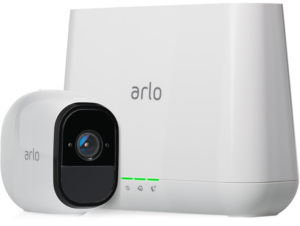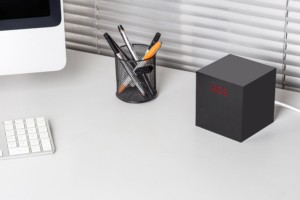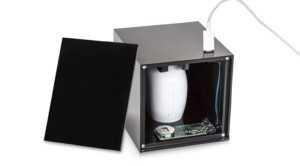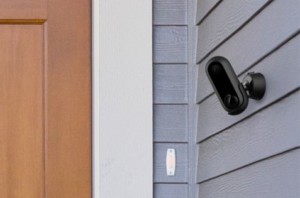Earlier this year I wrote about a few different consumer security cameras on the market that pose unique eavesdropping threats (here).
One of the more popular cameras has been the Arlo, sold by Netgear, available at outlets such as Best Buy and Sam’s Club. The Arlo was a replacement for the Netgear VueZone camera and was easy to use as a video device, but it only recorded video, no audio, so it was not able to eavesdrop on conversations (thankfully). It also required an active internet connection for the base unit. This would make it a bit more difficult to install in a corporate environment where the network may have active security in place. We found that Arlo cameras have been discovered being used as covert residential spy devices, but have not seen them used for corporate level eavesdropping espionage yet. The new version makes it a much more significant threat.

Arlo Pro, wireless battery powered camera.
Netgear has just announced the Arlo-Pro. Similar in size and shape to the original Arlo, the Pro uses rechargeable batteries with an expected battery life of up to 6 months. The bigger news is the camera now comes with a microphone and speaker, allowing it to activate recording as soon as it detects sound or motion. The addition of the microphone makes this new unit a much more serious eavesdropping threat.
Another significant feature is that the hub for the Arlo Pro can now store video recordings locally on a USB drive, eliminating the need for a wired internet connection for cloud storage, as required by the previous version. This would make it easier to deploy in a corporate environment, as the eavesdropper would not need to connected to any existing network.
The wireless range of the Arlo cameras is very good, up to 300 feet, but there is still the need for the base unit to be somewhere within that range. If an unauthorized Arlo is found in your facility, the base is probably not be too far away. Finding the base could help to determine who had installed the unit.


Accessories sold for the Arlo include covert housings designed to look like a desk clock.
For those concerned about espionage and eavesdropping, the Arlo Pro is worth paying attention to for a number of reasons:
- It is easily deployed. It needs no external power, allowing it to be quickly dropped in place and left working for up to six months.
- Wireless range is close to 300 feet in our tests. It creates it’s own wireless network, so it does not need to be connected to an existing WiFi network (which would make it more detectable as a rogue device).
- It only becomes active when recording or being viewed, so it is not detectable by thermal imaging, a common countermeasures tool, and the WiFi from the camera is only active when it is live or polling, so would be difficult to detect unless you are deliberately searching for it, such as during a WiFi inspection in a TSCM sweep.
- Recording can be stored locally so it does not need an active internet connection.

Variety of covert cameras

Another small wireless camera, Canary Flex
New products by other manufacturers continue to be introduced as well, so the eavesdropping threat continues to grow (see the new Canary Flex camera).
Of course, there are many other covert wireless and WiFi cameras on the market that can also be used for eavesdropping. Security professionals should be aware of all types and investigate thoroughly if they appear in your facility.
Smaller, lighter, long battery life, extended range, added features, all help to make electronic devices sell better, but also make them more of a threat if they are compromised or get into the wrong hands.
[Read more on Arlo Pro at Netgear]
